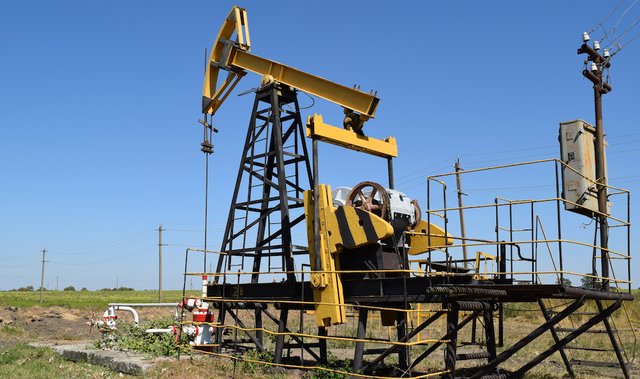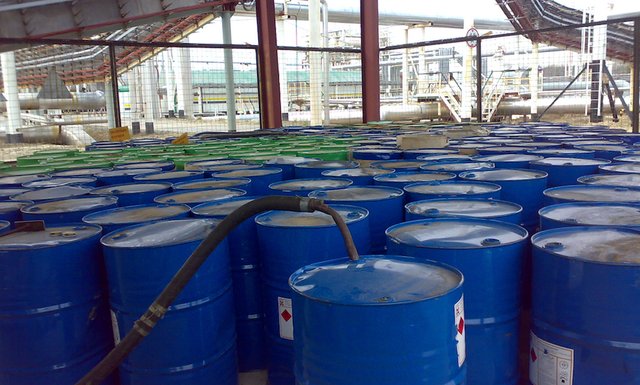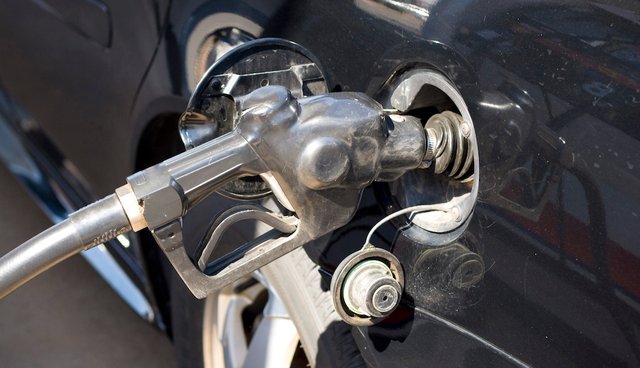How blockchain can be used in the Oil and Gas industry.
Author's note: When it comes to blockchain, one of the key discussions is always around how practical it is, and how it can be used to improve our standard of living. Truth be told, even at its infant stage, there is huge potential for adoption across all industries, and today, we're gonna look at one that is centuries old, and yet, could use a bit of a technological upgrade to bring it into the days of tomorrow.
Oil and Gas is one of the largest industry in the world. It is a lucrative business yet carries the risk of logistics and storage problems. The process to deliver from the source to the consumer includes exploration, extraction, refining, transporting via oil tankers and pipelines, and marketing of petroleum products.
The problem in this industry lies in the process of delivering millions of oil barrels each day from the raw source into the refinery and then transporting it to the consumer. There is a risk where oil and gas collected from downstream does not tally with the information provided in upstream.
On top of that, the current supply chain raises the question of the quality of the oil provided by the company. As each company produces different quality of oil with the same type of Research Octane Number, RON, how can we be sure that the quality of product remains the same after passing through each stage within the supply chain? Information can be recorded, but it can also tamper.
Knowing Blockchain
In contrast with oil and gas, blockchain is a technology that provides a secured peer-to-peer networking. But, how does it work in an oil and gas environment?
As we analyze the problem faced in the industry, blockchain technology may be a suitable tool to ensure the delivery of source in each stage is secured. The hash of the block is tamper-proof, and anyone who attempts to change the details within the block will be void. Hence, it is hard for anyone within the supply chain to fool the others with false information during the exchange.
But how does it work?
For example, let’s say a company that extracted X amount of oil from the oil field, which is then transferred through the pipeline to the refinery center. How can we ensure that the amount of oil transported from the field to the center is accurate?
By using the blockchain technology, we can tag the oil or gas being transferred from the field by blocks to the refinery center. At the receiving end, the refinery center could then approve the block within the chain while accepting the actual amount being transferred after it is proven tally with the source.
This block is then being recorded in the chain with the information of the source and quantity in it.
In another case study, how can gas station franchisee trace the origin of the petrol supplied to them? Is it from a third party? Or is it directly from the supplier? How do each party know whether they are dealing with a legitimate person? Supply from the non-trusted party could bring trouble as the quality of the petrol is not guaranteed.
How then, can the blockchain technology solve this problem?
Before departure from the processing center, each oil tank can be tagged with a unique indicator which is recorded into the system. The dealer that is receiving the petrol could then scan this information to verify its authenticity upon accepting it at the gas station. Once the transaction has completed, all the relevant information will be recorded into the system.
Not only can you trace the origin of the petrol, but you can also trace the quantity of petrol provided and received within the blockchain. All data will be encrypted, and it is impossible to falsify any information to prevent thief.
The problem of implementation
Because oil and gas is a huge industry, implementing such technology can be futile. Take OPEC for instance. How can the blockchain technology be applied without the agreement of every participating country?
Without a sound concession, it is impossible to see through such project comes to life. However, when we look back at history, the mass majority do not have any idea about the internet when it was first launched.
Fast forward to today, we are looking at rapid growth in the usage of the internet all over the world. Moreover, the majority of the population who uses mobile phones cannot live without it.
New technology is often deemed complicated, and people are skeptical with what they do not understand.
The same goes for blockchain technology. Through knowledge refinery and proper explanation, blockchain technology may prove to be a worthwhile investment to the corporate world for future growth.
Conclusion
Though implementing a blockchain technology into the oil and gas industry is still in its infant phase, prototypes were being made behind the programming room to test out the significant impact in the industry.
It is not impossible that such technology can be used to provide a more reliable way to deliver the oil and gas from upstream to downstream. As the origin of each oil barrel is recorded into the blockchain, it will be hard for anyone to tamper the record of inventory. Thus, providing a transparent system for every participating country.
Another way where the oil and gas companies can see a faster implementation of the blockchain is to form strategic partnerships with solution providers who always have the tracking and digital ID solutions designed for the blockchain, like Xendity. Xendity is a digital identity management service provider that uses a decentralized storage system to manage and encrypt the users' databases. As each oil and gas, logistics and distribution companies can be stored on the Xenchain blockchain, access to the data for verification purposes is made easier. Plus, the owner of the data has full control over that data will be shared. Coupled with the possibilities to grant a fixed-term permission means the data owners can automate the process of verification over a set period of time, say over a contract period, and still be able to terminate the access at a flick of the button.
To find out more about Xenchain and the $8billion Global Identity & Access Management market it's addressing, visit www.xenchain.io. You may be lucky enough to grab a slice of that market too when you register for the private token sale.
Hi there! Thanks for stopping by. I mostly blog about Steemit Success Strategies, business, marketing, entrepreneurship, psychology, community and random thoughts.
Talking about Steemit Success Strategies, if you want to 10x your results on this platform, perhaps some of these guides will be able to help you.
- How to generate at least 365 post ideas for your Steemit Life (and possibly never run out of ideas again!)
- The 4 Big Cs of Steemit Success
- 8 Content Strategies to Excite & Engage your Steemit Followers
- 29 Steemit Post Types to Attract More Followers & Boost Your Popularity (Part 1)
- 29 Steemit Post Types to Attract More Followers & Boost Your Popularity (Part 2)
- Copywriting Magic for Steemit: "How To" Post Titles
- Copywriting Magic for Steemit: "List Type" Post Titles
- Steemit Success Strategies #1 - The Law of Requisite Variety
- Steemit Success Strategies #2 - Batching + Parkinson's Law
- Four + Four Free Tools to get more exposure for your Steemit Projects
- How to apply the 80/20 rule to your Steemit Life
- Steemit Experiment Report: 21 days, 21 minutes, 21 posts later, PLUS an 8-Step Guide on How to Write a Steemit Post every day under 30 minutes
- Case Study on Bid Botting - A Steemit Bootcamp follow-up module, a cheatsheet and why I probably won't use it
At least once a month, I run Steemit community events and training workshops with my buddies at #teammalaysia too. Some examples are:
- Steemit Bootcamp March 2018 - KICKSTART Your Steemit Success
- BoilerRoom 03.03.2018 | Let's Huddle, Hustle & Hack Out Awesome Steemit Contents!
I'm also grateful to be part of #steemitbloggers , SmartSteem and the sndbox.


Animated Banner Created By @zord189

Wait, why's Mav posting on Steemit nowadays?
Well, unlike other blogging and social media platform, Steemit is the only platform that allows me to earn cryptocurrency when I engage with it. Yup, one Steem is about USD5, and you, too, can earn Steem Dollars every time you:
- Create content (articles, blog posts, podcasts, videos, photos)
- Upvote (like) other people contents
- Comment on other people's posts
- Have discussions, share opinions etc!
Yup, basically it's the very same thing you're doing on Facebook, Twitter, Instagram etc all along!
The only difference? For once you can earn a nice income on the side!
Sign up for a free Steemit account, and you can thank me by coming back and upvoting this article. And guess what, you will earn Steem too for doing that! #awesome







Currently i am also building a few blockchain project, my personal view on blockchain will be the next generation of web (web 3.0).
We will create a trustless and transparent system! Hope this day wont be long
Great article. Coming from an oil and gas industries I see many processes that will benefit from blockchain technology. Two examples is in the procurement and revenue area. With many projects are join ventures between 2-3 companies plus reporting to agencies and hosts government, blockchain will provide trustless reporting effortlessly.